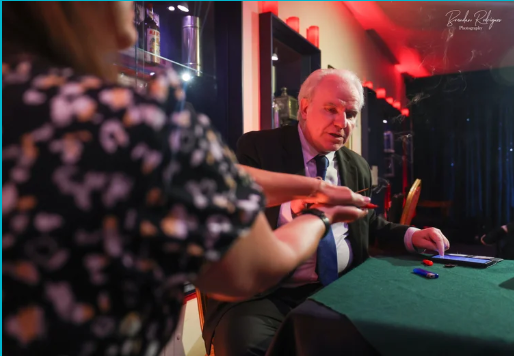Cold Reading Examples: How Psychics and Communicators Sound So Accurate
Cold Reading Examples: How Psychics and Communicators Sound So Accurate
Have you ever met a psychic, fortune teller, or mentalist who seemed to know things about you they couldn’t possibly know? Chances are, they were using clever communication techniques. To understand how it works, it helps to look at real cold reading examples.
Cold reading isn’t about psychic powers it’s about psychology, probability, and language. In this guide, we’ll break down the most common cold reading examples, explain why they work, and show how they’re used both on stage and in everyday life.
What Is Cold Reading?
Before diving into cold reading examples, it’s important to understand the term. Cold reading is the art of making statements that sound personal and insightful without any prior knowledge of the person.
Instead of relying on supernatural powers, performers use generalisations, observation, and psychology. The best way to understand this is by looking at practical cold reading examples in action.
Classic Cold Reading Examples
Here are some of the most popular cold reading examples still used today:
1. The Barnum Statement
A vague but flattering statement that applies to most people.
Example: “You want people to like and admire you, but you can be your own harshest critic.”
2. The Rainbow Ruse
Giving someone opposite traits so the statement is always true.
Example: “You can be outgoing, though at times you need space to recharge.”
3. The Jacques Statement
Linking personality to age.
Example: “When you were younger, you worried about fitting in, but now you’re more confident.”
4. The Fuzzy Fact
A statement that seems specific but is deliberately vague.
Example: “I sense a connection to someone whose name begins with J.”
5. Sugar Lumps
Sprinkling in flattering remarks.
Example: “You’re the kind of person people naturally trust.”
These cold reading examples resonate because they tap into universal human experiences.
Why Cold Reading Examples Work
The effectiveness of cold reading examples comes from human psychology:
The Barnum Effect – People accept general statements as personally meaningful.
Confirmation Bias – We remember the “hits” and forget the “misses.”
Feedback Loops – The speaker adjusts based on reactions and body language.
This is why cold reading examples feel accurate even when they’re not based on real knowledge.
Cold Reading Examples in Everyday Life
It’s not just psychics who use these techniques. You’ll find cold reading examples in:
Sales and Marketing: “You care about value, not just the lowest price.”
Leadership: “You’re someone who takes pride in supporting others.”
Dating and Socialising: “You seem confident, but I sense you prefer deeper connections.”
These cold reading examples show that the techniques are really about empathy and rapport, not magic.
Spotting and Using Cold Reading Examples
Understanding cold reading examples helps in two ways:
Protection – You can spot when someone is using them to appear more insightful than they are.
Application – You can use them ethically to connect, show empathy, and build trust in conversations.
Like any tool, the value of cold reading examples depends on the intention behind them.
Psychics, performers, and even salespeople rely on cold reading examples to sound accurate and insightful. Once you recognise the techniques, you’ll see them everywhere from stage shows to casual conversations.
Learning these cold reading examples doesn’t just help you protect yourself it also gives you a toolkit for improving your own communication and building stronger human connections.





